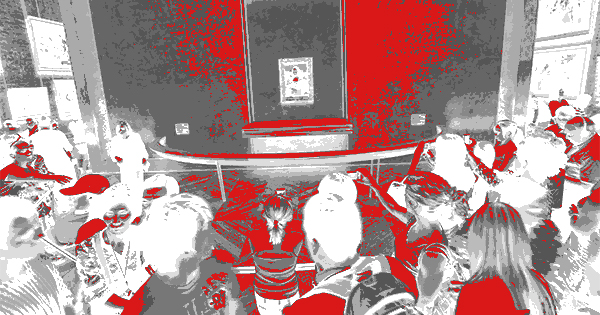
Signalling in Marketing: How to Make Your Brand Stand Out
Introduction
In the crowded marketplace of today, standing out is not just an option—it’s a necessity. As a marketing manager, you’re constantly challenged to find ways to differentiate your brand and cut through the noise. One powerful tool in your arsenal? Signalling.
Theoretical Foundations of Signalling
Understanding the Concept
Signalling theory isn’t new, but its application in marketing is often overlooked. At its core, signalling is about conveying information—often nonverbally—to influence perceptions and behaviours. Think of it as the silent language of marketing.
Adaptation in Marketing
While signalling theory has its roots in economics and biology, marketers have embraced it as a way to create distinctive brand identities. By understanding how signals are perceived and interpreted, brands can strategically craft their messaging to stand out in the minds of consumers.
Signalling in Branding
Building Brand Equity
Branding is all about creating associations and perceptions. Every element of your brand—from your logo to your tagline—serves as a signal to consumers about who you are and what you stand for. Take my experience with a luxury watch brand, for example. The sleek design and intricate craftsmanship were signals of quality and exclusivity, prompting me to make a purchase.
Case Studies in Effective Signalling
Consider iconic brands like Apple and Nike. Their consistent use of signals—such as minimalist design and celebrity endorsements—has helped them establish strong brand identities and cultivate loyal followings. By aligning their signals with their target audience’s values and aspirations, these brands have successfully differentiated themselves in competitive markets.
Signalling in Advertising
Crafting Compelling Messages
Advertising is a powerful vehicle for signalling. From TV commercials to social media ads, every touchpoint with consumers is an opportunity to communicate your brand’s unique value proposition. Take my recent encounter with a cleverly crafted ad campaign for a local craft brewery. The witty copy and vibrant imagery were signals of creativity and authenticity, piquing my interest and driving me to learn more about the brand.
The Role of Consistency
Consistency is key when it comes to signalling in advertising. By maintaining a cohesive brand voice and visual identity across all channels, you reinforce your brand’s messaging and make it easier for consumers to recognize and recall your brand. Just think of Coca-Cola’s timeless “Share a Coke” campaign—its consistent use of personalized packaging was a powerful signal of connection and inclusivity.
Signalling in Pricing
Price as a Signal
Pricing is more than just a number—it’s a signal of value. Whether you’re positioning your brand as a premium offering or a budget-friendly alternative, your pricing strategy sends a clear message to consumers about the quality and exclusivity of your product or service. My own experience with a high-end restaurant taught me the power of pricing as a signal of luxury and sophistication.
Strategies for Success
When it comes to pricing, transparency is key. Be upfront about your pricing and justify it with tangible value propositions. Whether you’re offering a premium product or a discount deal, make sure your pricing aligns with your brand positioning and resonates with your target audience.
Signalling in Customer Experience
Creating Memorable Moments
Your customer’s experience with your brand is a direct reflection of your signalling efforts. From the moment they interact with your website to their post-purchase support experience, every touchpoint shapes their perception of your brand. That’s why it’s essential to deliver consistent, high-quality experiences that reinforce your brand’s values and differentiate you from the competition.
Personalization as a Signal
In today’s hyper-connected world, personalization is a powerful signalling tool. By tailoring your messaging and offerings to individual customer preferences and behaviors, you signal that you understand and value their unique needs. Just look at Amazon’s personalized recommendations or Spotify’s curated playlists—they’re signals of a brand that truly cares about its customers.
Ethical Considerations in Signalling
The Importance of Integrity
While signalling can be a powerful tool for building brand equity, it must be used responsibly. Misleading or deceptive signalling practices can erode consumer trust and damage your brand’s reputation. That’s why it’s crucial to operate with integrity and transparency in all your marketing efforts.
Building Trust Through Authenticity
Authenticity is the cornerstone of effective signalling. By being genuine and sincere in your communications, you signal to consumers that you’re trustworthy and reliable. Take my experience with a local food truck that proudly displayed its farm-to-table sourcing practices—it was a powerful signal of authenticity that earned my loyalty as a customer.
Conclusion
In conclusion, signalling is a fundamental aspect of marketing that can’t be ignored. By understanding the principles of signalling and leveraging them effectively, you can create meaningful connections with your target audience, differentiate your brand from the competition, and ultimately drive business success. So, don’t just be different—be distinct, and let your brand’s signals do the talking.
Topics covered
Latest articles
April 19, 2025
Written by : Mark Rowland
Mark's been working in and interested in all things marketing since 2010.









